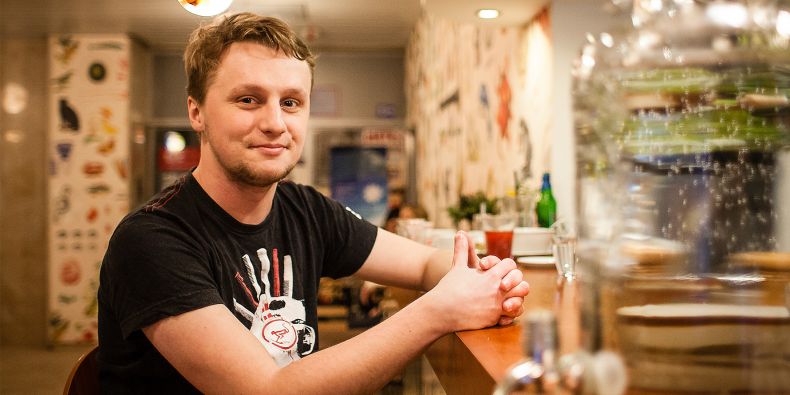“An initiative of people who strive for a life without violence and hate.” This is the focus of the HateFree Culture media project that was started last year by the Office of the Government of the Czech Republic. The aim of the project is to initiate democratic discussion about topics such as integration of the Roma population or the position of gay people, but it has also played an active role lately in the context of the refugee crisis. Jaroslav Cerman, a student of the Faculty of Social Studies, is one of the key players in this project.
His work with the HateFree Culture project began when the late Lucie Bittalová – a graduate of the Faculty of Arts, who was part of the project from the very beginning and attracted a lot of attention last year in connection with the public awareness campaign “Month of Cancer” – fell ill.
“When Lucka became ill and couldn’t go on with her work, she recommended me for the job. The HateFree people already knew me from social media and they saw that I was quite active and successful there, so they contacted me,” says Jaroslav, adding that he has always been interested in activism of this kind. At the moment, he oversees the overall operation of the project, manages its Facebook page and website and represents HateFree during public events.
One of his most important tasks consists in revealing and debunking hoaxes – information that is either based on false and fabricated facts or that interprets real facts in a misleading way. “There are a lot of these, their number increases every day and they become more and more absurd. What surprises me is that as the absurdity increases, ever more people are willing to believe them,” describes Jaroslav. He says that these false news stories often come from completely unreliable websites and lack publication dates, but focus on shocking images full of violence.
A good example is an image showing a mother holding her daughter’s head covered in blood, with the article saying that the Muslims did this to the girl because she did not cover her head. “In the end, it turned out that that is a photo of a car accident that happened probably in Vietnam five years ago, and the child died after being hit by a truck in this terrible way,” says Jaroslav, who studies sociology and journalism and uses this example to show how cynical the authors of such hoaxes can be.
The initiative started before the refugee crisis became a focus of public attention, but it has nonetheless gradually became the most important topic. “I see a huge shift in our activities away from the Roma and gay people, because everybody suddenly stopped seeing them as a problem. On the contrary, their original opponents are now often on their side, because they have found a new enemy – the Muslims.”
According to Jaroslav, this does not mean that these minorities no longer face any problems, but the attention of the HateFree project has shifted towards Islam, as this area has seen a surge of activities that are not entirely in line with democratic values. “I am surprised that intelligent and well-educated people, who should know better, engage in negative activities and proclamations out of pure ideological hatred,” says Jaroslav. “This is something I don’t really understand.”
The main message of HateFree is that people can live without hate. Jaroslav explains that negative reactions are needless even when directed towards people that some see as “the other side”, such as Martin Konvička, the leader of the initiative “No Islam in the Czech Republic”. “We are against hate even if it is directed against him. He has been abused by people who say he is ugly and sexually frustrated, which is repugnant and completely beside the point,” says Jaroslav.
The HateFree Culture project is often criticised for targeting primarily those who do not have an entirely negative attitude towards minorities. However, Jaroslav says that it is difficult to target the whole society. “Our campaign is focused primarily on students at secondary schools and universities. People must learn to discern and seek out truthful information when they are young.”
In the future, the HateFree Culture project will continue to debunk hoaxes, but there are also plans to be more present at cultural events and organise new media campaigns. The aim is to become an integral part of the media environment and to point out errors that appear in the media, rather than just reveal internet hoaxes.
Jaroslav describes the positive impact of the campaign: “We do not aim to make everyone love one another. What we want is to offer another perspective to people who don’t want to drown in negative attitudes. It is interesting to see that some of those who started communicating with us half a year ago and called us traitors have now come round and like us.” That does not necessarily mean that people have changed their opinions, but they opened their minds to a democratic discussion – and, as Jaroslav says, that is the primary goal.
